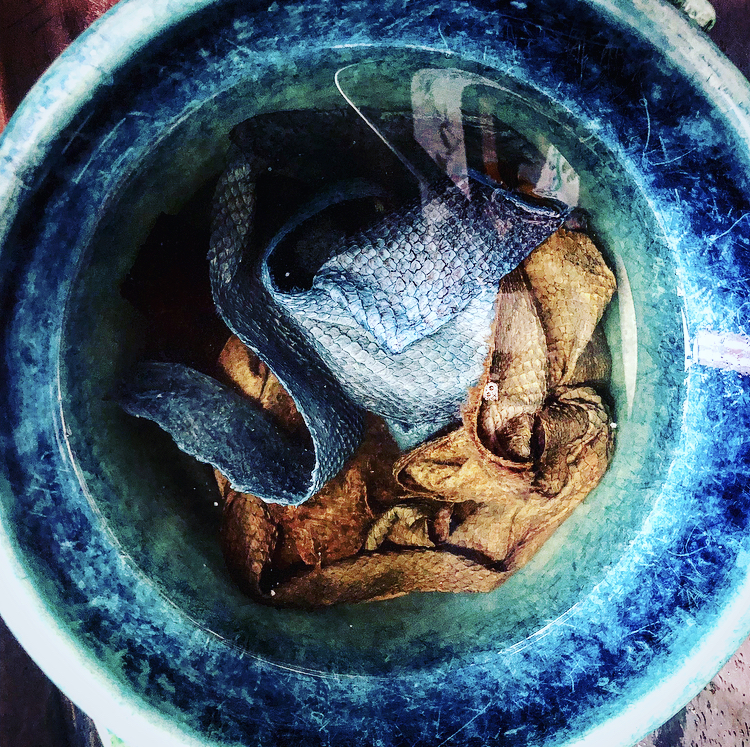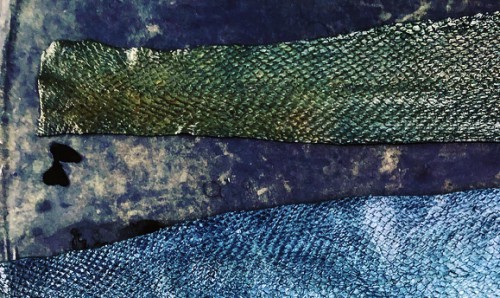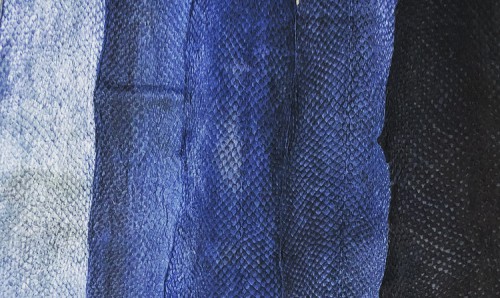
DAIWA INDIGO DYE FISHSKIN WORKSHOP
The use of fish skin for the construction of garments is an ancient tradition shared by Arctic coastal societies, some of the earliest traces being found from the Ainu populations in Hokkaido, Japan.
The use of fish skin has recently been assimilated as an innovative sustainable material used in fashion products due to its lower environmental impact.
The Sustainable Fish Skin Network project has developed common interests in the UK and Japan in the fields of fish skin, leather and sustainability. The network has brought together a community of experts including fashion design academics and practitioners, and artisan experts in natural dyes, with the aim of improve knowledge of sustainable methods for fish skin production as a greener alternative to exotic leather. The Sustainable Fish Skin Network has mapped existing traditional knowledge on natural dying from Japanese craftsmen in order to transfer the skills into fish skin.
Project objectives:
- Improve knowledge of sustainable methods for fish skin dying
-Identify different traditional dying process for fish skin using natural principles with a very low environmental impact in order to introduce them to contemporary industrial dying to reduce the supply of chemicals, the environmental impact, generating cleaner water and less CO2.
Project achievements:
-During the trip I worked with four traditional Japanese dyers and tested both indigo dying and natural dyes on fish skin. The results were excellent and they were tested to evaluate the possible use in contemporary industrial dying for fish skin.


